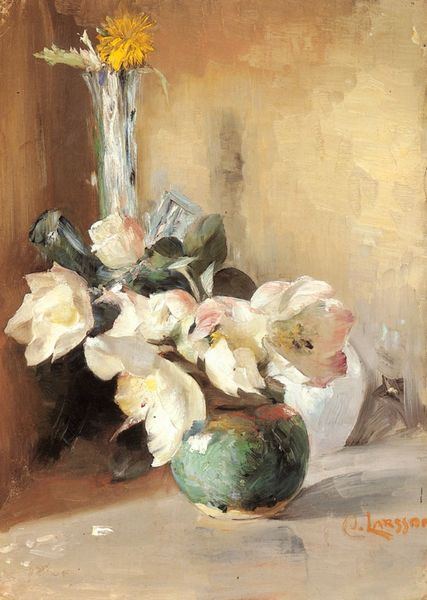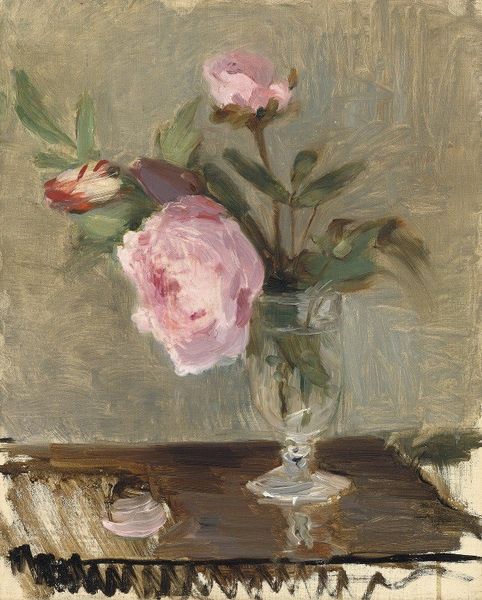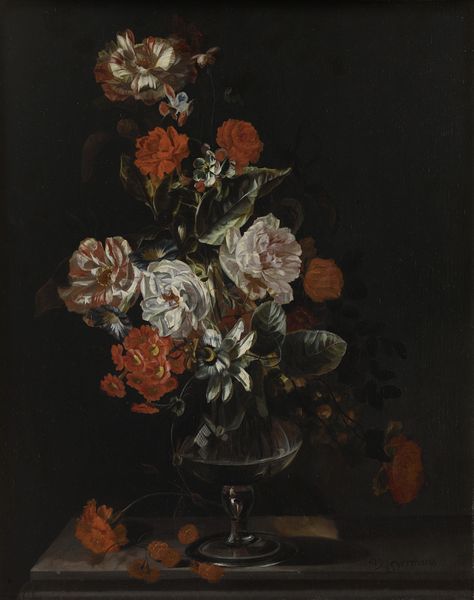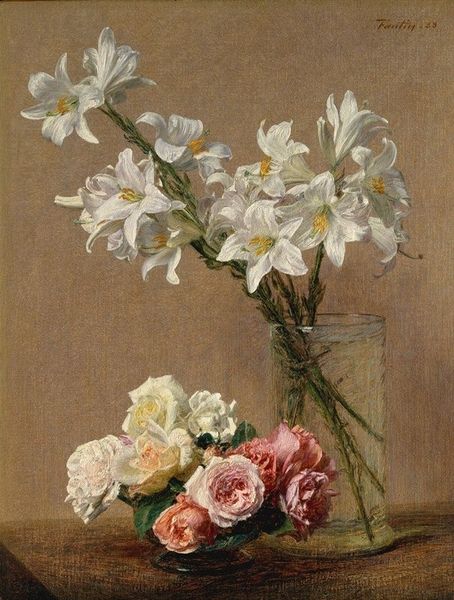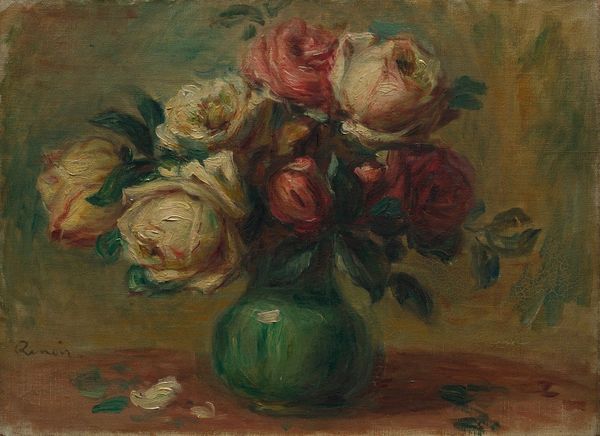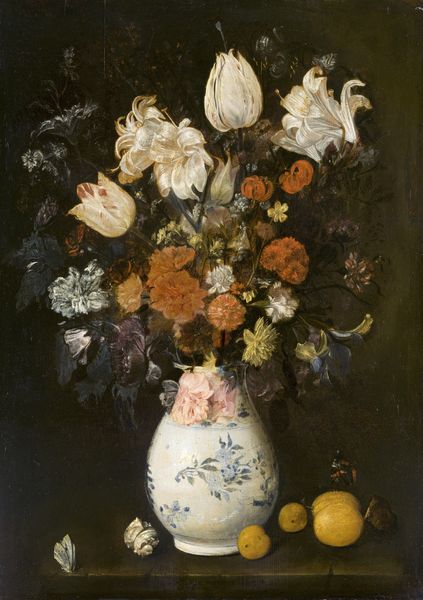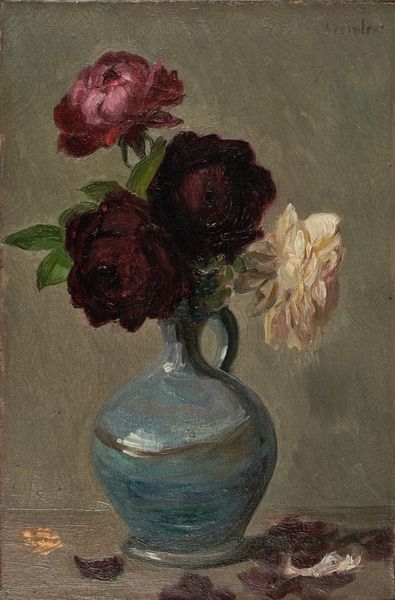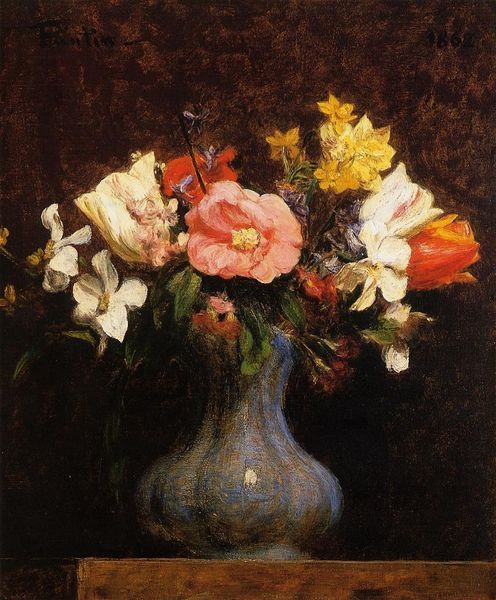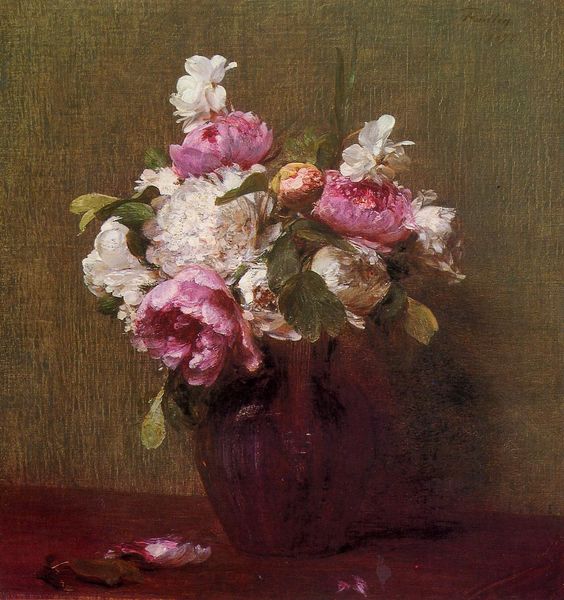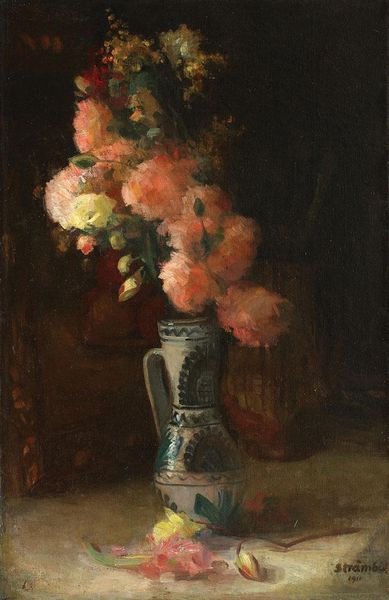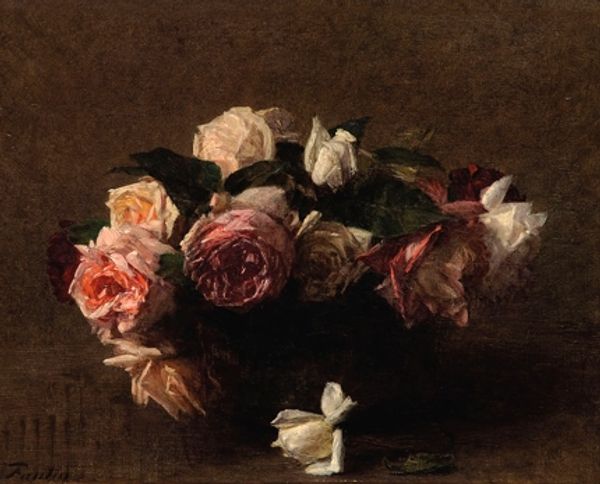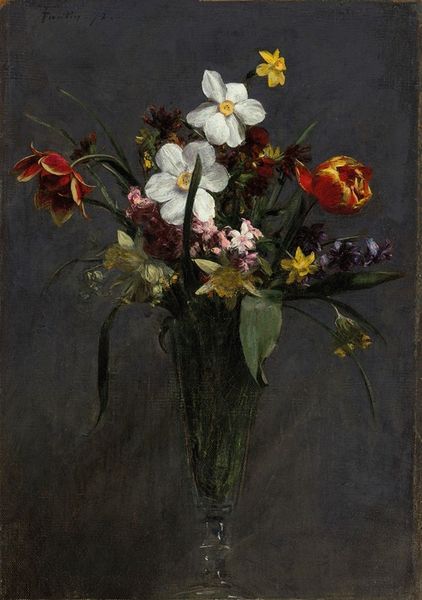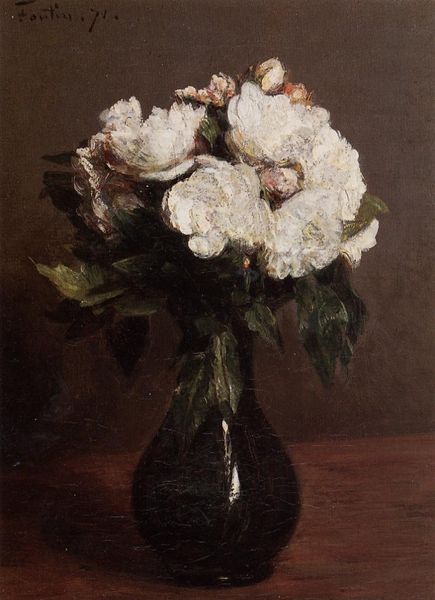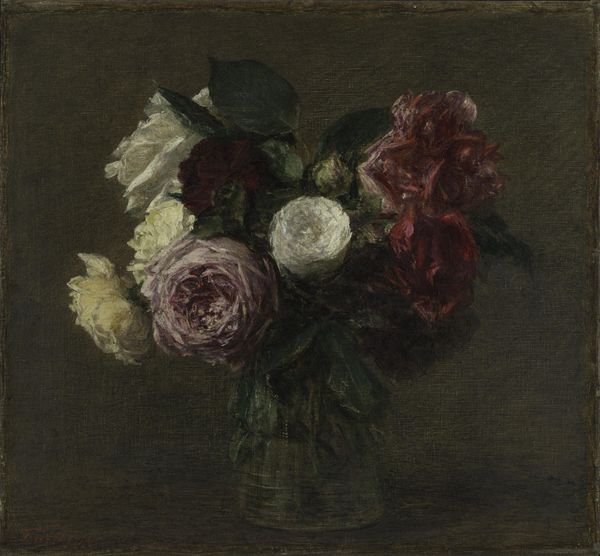
Copyright: Public domain
Editor: This is "Flowers," painted by Nikolaos Gyzis in 1895, using oil paint. There’s such a striking contrast between the dark, almost somber background and the luminous blooms. How do you interpret this work? Curator: The seemingly simple still life carries immense socio-political weight when we examine Gyzis's position as a Greek artist working within the late 19th-century European art world. While appearing to engage with European intimism and romanticism, could this arrangement be a subtle commentary on themes of identity and belonging? Do you think the contrast you observed could symbolize the tension between embracing a Western aesthetic and maintaining a connection to his Greek heritage? Editor: That’s fascinating; I hadn’t considered that. It’s easy to just see pretty flowers! So, the choice of specific flowers or the way they're arranged... Curator: Exactly! It demands that we question whose gaze dictates what's considered 'beautiful' and who has the power to represent it. Are these flowers specifically chosen, for example, with a nod towards their cultural significance? Does this intimate scene, typically associated with domestic tranquility, carry a subversive message of cultural negotiation and resistance? Think about how artistic movements travel, and whose voices are amplified or silenced in the process. Editor: It's making me rethink my initial impression. Instead of just being aesthetically pleasing, the painting could be a quiet statement on cultural identity and artistic agency. Curator: Precisely. And it is also aesthetically pleasing, so understanding these layers only serves to enrich our experience and incite social discourse! Considering the socio-political circumstances is imperative when viewing any piece of art, no matter how subtle the message may seem. Editor: I'll definitely look at art differently now, thinking about the artist's position and the cultural context shaping their work. Curator: That's the first step. And art always benefits from deeper analysis and discourse!
Comments
No comments
Be the first to comment and join the conversation on the ultimate creative platform.
